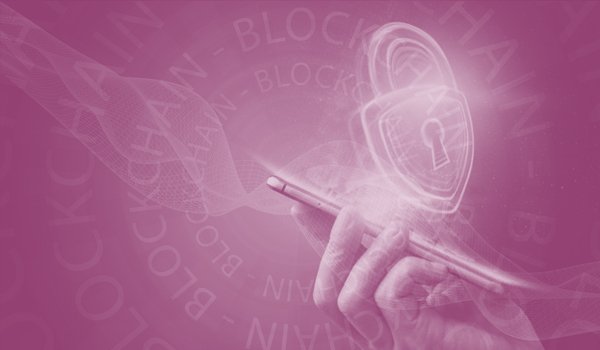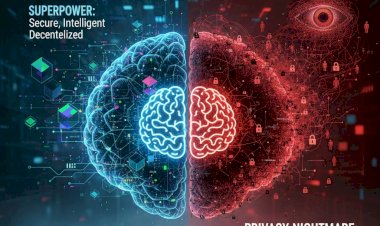Privacy in Blockchain Technology
Anonymity and privacy are not just an advantage for Blockchain users. In case the users’ digital asset is lost due to cyber accidents, tracking the attacker and retrieving the asset will get very problematic. However, there is no doubt that Blockchain has improved the issue of the users’ privacy to a new level. The level wherein preserving the users’ private information is more important than any other principle.

Privacy is one of the most important issues related to the world of technology today. Even the most pertinacious analysts have not predicted the issue of preserving privacy in the digital space to find such importance. In fact, it can be alleged that currently preserving privacy has turned into the most vital demand for the majority of the users in the atmosphere of digital communications and trades. The reason is absolutely clear. Each year billions of people make their personal, occupational and familial information available in the digital world. The news of selling Facebook users’ information has unveiled a new aspect of privacy. This event was so effective that the value of the Facebook stock has dropped more than 10 billion dollars after the news of the users’ information being sold was confirmed. Privacy has actually become an issue related to people’s personal rights and a moral or even economic subject as well.
Developing Blockchain technology gives the hope of a better space to preserve privacy in the digital world. Having a decentralized and transparent ecosystem and also an encrypted communication, Blockchain prevents the relationship between the third party and the sent messages and transactions. These features cause making censorship, manipulation, and surveillance of digital information difficult in the large scale.
One of the significant elements in preserving privacy in Blockchain is using private and public keys. The mechanism of using public and private keys plays a significant role through providing anonymity in preserving Blockchain users’ privacy. The user should generate a set of public and private keys to use Blockchain services. The public key will be available for the other network users while the private key is only in the hand of the user him/herself. Although public and private keys are mathematically related, finding the private key through having the public key is indeed impossible. The message which is encrypted by one of the keys will just be decrypted by the other key. After generating pairs of public and private keys in the Blockchain network, an address is allocated to each user; this address is the user’s public key hash.
The address is used to transfer assets in Blockchain, and the transactions’ history can be tracked using the addresses. Each user is diagnosed with his/her address. Similar addresses are like random IDs which keep the user’s main identity hidden from the others. Moreover, the user can alter his/her pair keys in time in order to make his/her activity tracking impossible. Private keys are used to authenticate the user’s identity for getting access to his/her assets. No information is stored from the user’s identity such as the name, contact information, address and the like; each user is present in the network at least with one address as it was mentioned.
Each block of Blockchain provides transactions’ transparency through giving the sender’s address, the receiver’s address, and transfer volume. Although the users’ real identity remains hidden with private and public keys, from the viewpoint of many, its transparency is in contradiction with preserving privacy, and they are unwilling to clarify such information in the network. Hence, in recent years, through employing encryption science developments, new versions of Blockchain have been offered which were able to provide a higher level of preserving privacy for the users. Monero and Zcash are two examples of such structures.
Monero has entered this field through offering Ring Signature-based structure in preserving privacy beyond its rivals. Ring Signature was first introduced in 2001 in Asiacrypt conference in the field of encryption. In this encryption method, each group member can sign a message without making clear the person who has signed. In Monero network, the sender, receiver and the amount of transactions are not specified for the other people; moreover, there will not be the possibility of calculating users’ asset. Even two transactions with the same origin and destination cannot be specified.
Zcash keeps hidden the sender and receiver’s address and the amount of transactions through a protocol called ZKP (Zero-knowledge proof). Via this protocol, the person can prove being informed about message X without publishing it for the other. A version of ZKP used by Zcash is named zk-SNARKs.
Preserving privacy in Blockchain technology is so high that it even has drawn the attention of Dark web users. Currently, most of the financial transactions of the black trade are conducted using different cryptocurrencies in this network. Using cryptocurrencies in illegal trades like drug and money laundering has always been among the states’ worries in developing this technology. From the one hand, hiding the identities will cause difficulty for them in tax collecting from the people who buy and sell cryptocurrencies. Japan has forbidden giving services to the crypto-exchanges without knowing the main identity to combat this challenges.
Anonymity and privacy are not just an advantage for Blockchain users. In case the users’ digital asset is lost due to cyber accidents, tracking the attacker and retrieving the asset will get very problematic.
However, there is no doubt that Blockchain has improved the issue of the users’ privacy to a new level. The level wherein preserving the users’ private information is more important than any other principle.




















